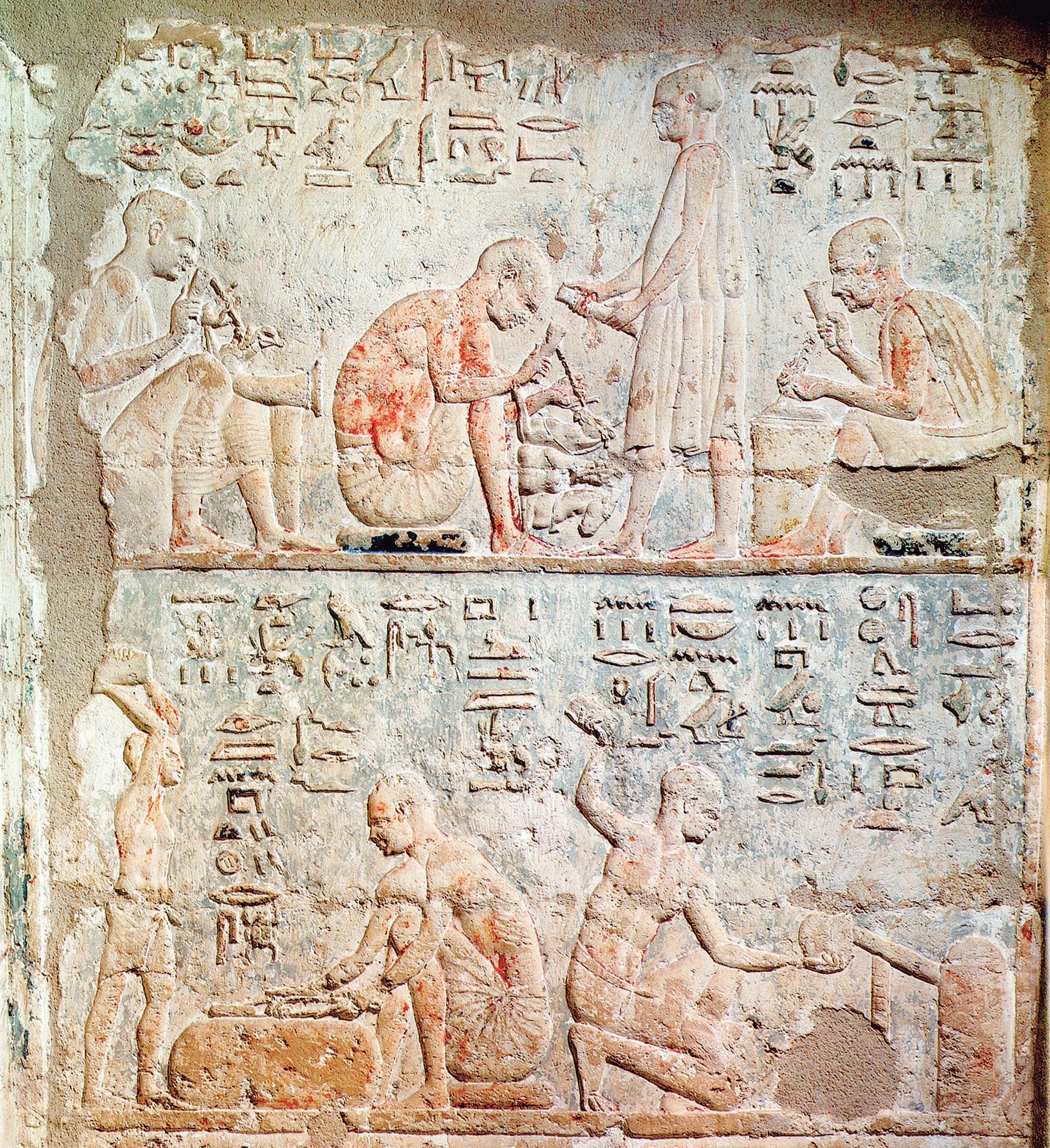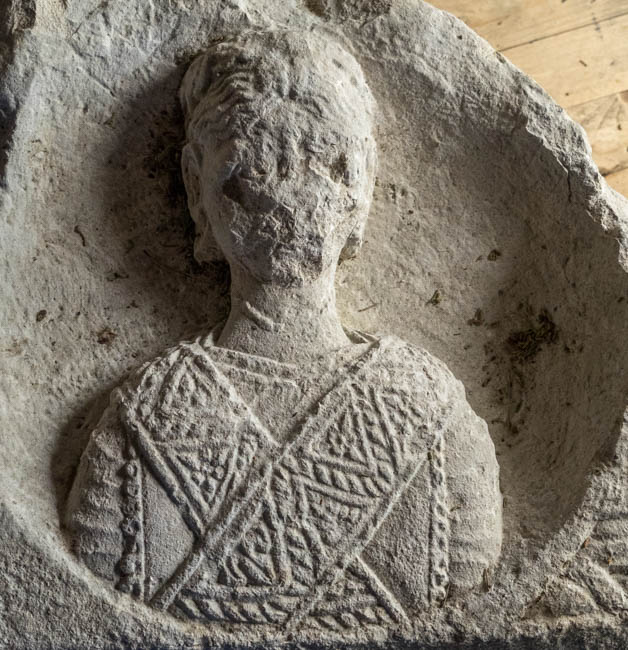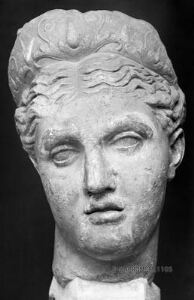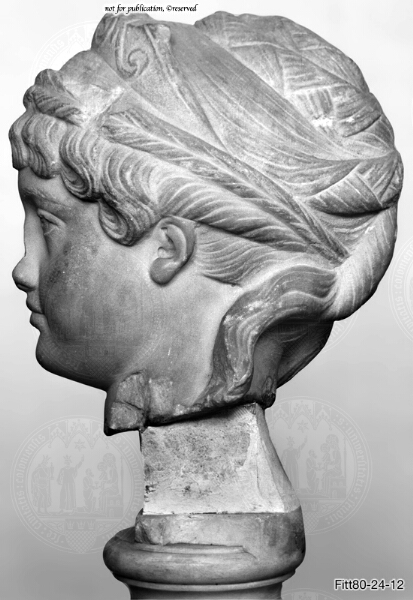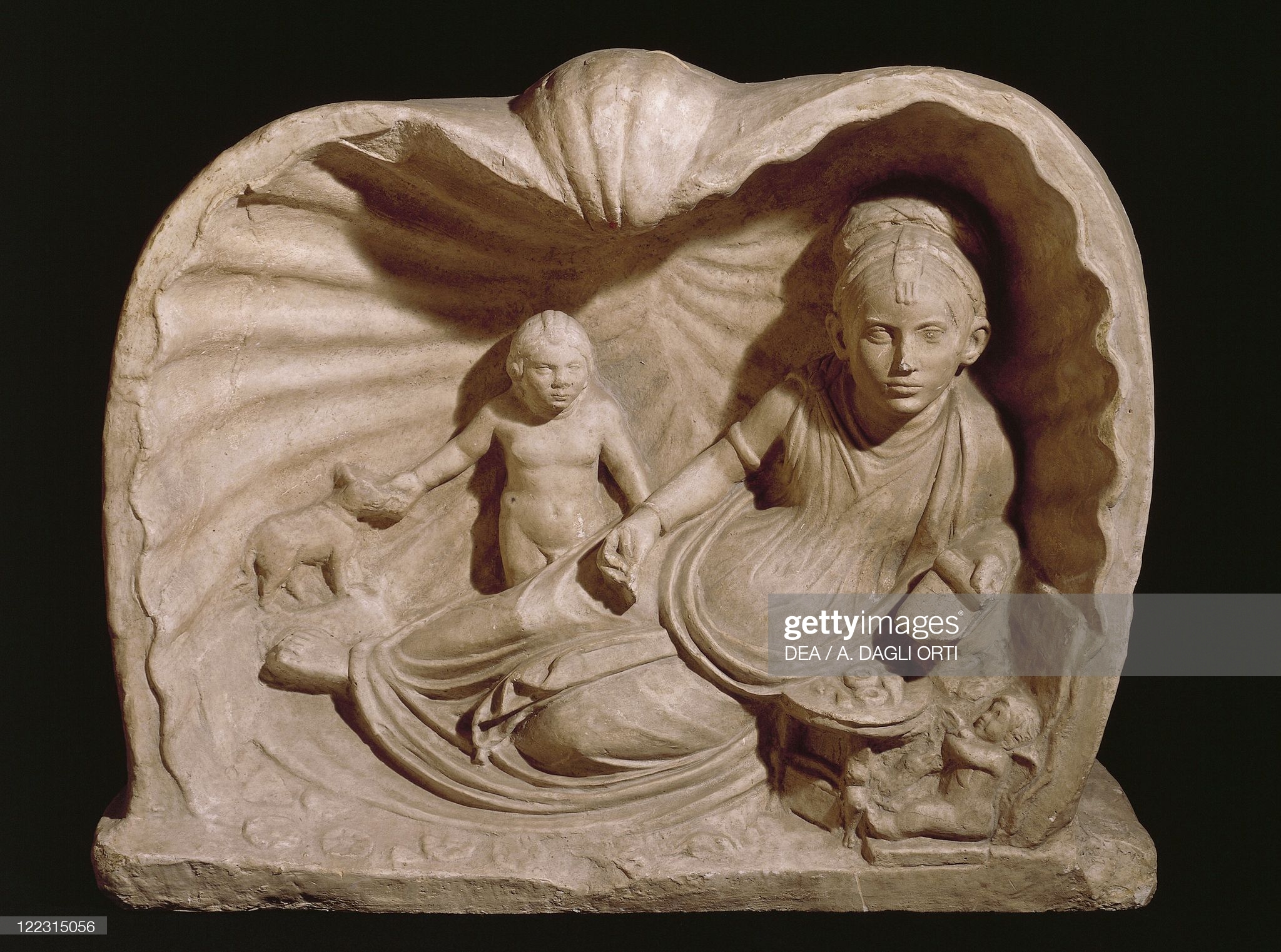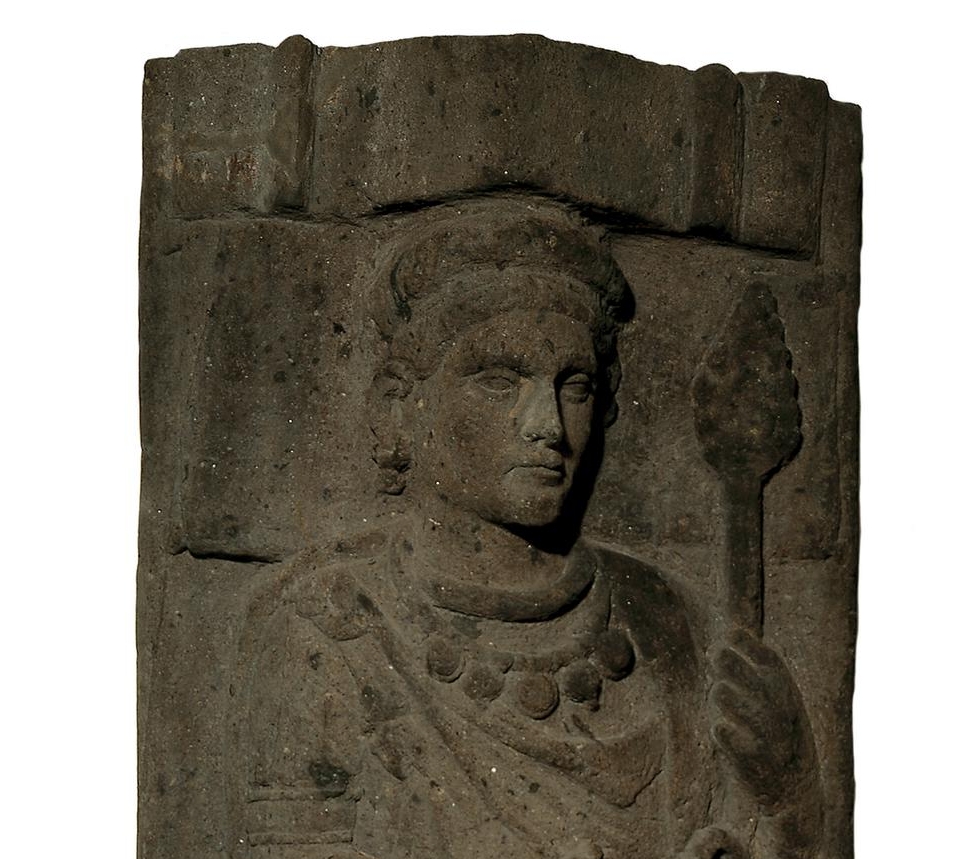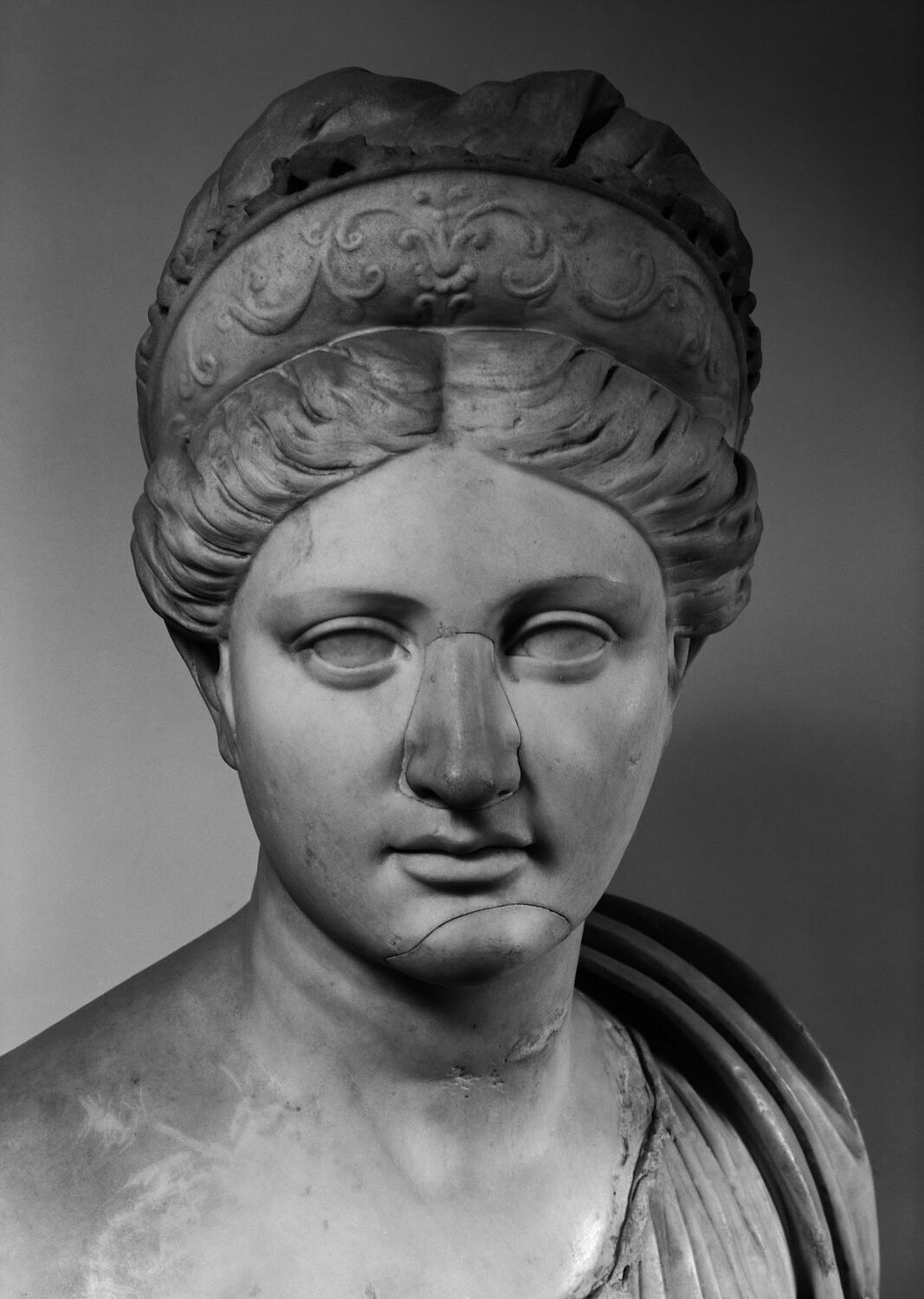
Cerveteri, Banditaccia Necropolis, Tomb of the Sarcophagi
400-375 B.C.
Marble, total height 100 cm; length 190/195 cm; width 66/70 cm
Inv. no. 14949 Musei Vaticani
“Sarcophagus with polychrome relief
Unearthed in 1845-1846 during the excavations by the Marquis G. P. Campana, inside a burial chamber, the “Tomb of the Sarcophagi”, whose walls were originally decorated with paintings.
On the lid the deceased is depicted reclining, cloaked, crowned, adorned with jewels and with a patera for libations; next to the head there is a folded liber linteus, a book written on a linen cloth, perhaps a sacred text.
The seahorses on the tympanumallude to the journey into the Underworld by sea, while the two semi-reclining figures with a krater recall a symposium transposed into the hereafter. On the casket there is a funeral procession with the deceased depicted on a chariot with his wife, accompanied by musicians (playing the tibia, the lyre and the horn) and dancers, with a cloaked figure and a priest with a lituus (stick curved like a staff). It is one of the most ancient specimens in the Etruscan series. The iconography combines the novelty of the procession with themes of archaic tradition: the banquet, musicians, dance and the married couple in attendance. Retrospective references coexist also in the style.”


